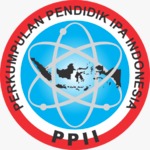Pengaruh Penggunaan Laboratorium Virtual Berbasis Web Terhadap Kemampuan Pemecahan Masalah Fisika Peserta Didik Pada Materi Gelombang Bunyi
DOI:
https://doi.org/10.29408/kpj.v7i3.23080Keywords:
Sound Waves, Virtual Laboratory, Problem Solving, Web.Abstract
This research aims to determine the effect of using a web-based virtual laboratory on students' physics problem solving abilities on Sound Waves material. The type of research used was quasi-experimental with a Pretest-Posttest Nonequivalen Control Group Design research design. The population in this study were all class XI students at SMAN 6 Mataram. The research sample was obtained using the Purposive Sampling technique, namely XI MIPA 2 with a total of 15 students as the experimental class and class XI MIPA 3 with a total of 15 students as the control class. The sample in this study was only 15 students because the data that will be taken and used as samples are only students who took part in both activities, namely pre-test and post-test, and the population in this study is approximately 100, so the number of samples that can be taken is at least less than 50% of the population size. The test instrument used is in the form of questions describing problem solving abilities. Before the problem solving ability test instrument is given, a trial of the instrument is first carried out, namely testing validity, reliability, level of difficulty and differentiability. The results of the analysis show that the average score for the physics problem solving ability of students taught using a web-based virtual laboratory is 68.60 and the average score for students taught without using a web-based virtual laboratory is 52.67. The results of hypothesis testing using the t-test obtained a calculated of 3.92. Because the obtained is greater than the value, then is accepted and is rejected. These results show the influence of using a web-based virtual laboratory on students' physics problem solving abilities in class XI sound wave material at SMAN 6 Mataram.
References
Adachi, P. J., & Willoughby, T. (2013). More Than Just Fun and Games: The Longitudinal Relationships Between Strategic Video Games, Self-Reported Problem Solving Skills, And Academic Grades. Journal Of Youth and Adolescence 42(7): 1041-1052.
Annam, S., Susilawati, S., & Ayub, S. (2020). Pengaruh Model Pembelajaran POE (Predict-Observe-Explain) Terhadap Kemampuan Pemecahan Masalah Fisika SMA ditinjau dari Sikap Ilmiah Peserta Didik. Jurnal Ilmiah Profesi Pendidikan, 5(1), 35-42.
Baedhowi, B., Triyanto, T., Totalia, S. A., & Masykuri, M. (2018). Peningkatan Proses pembelajaran dan Penilaian Pembelajaran Abad 21 dalam Meningkatkan Kualitas Pembelajaran SMK. Jakarta: Direktorat Pembinaan Sekolah Menengah Kejuruan.
Buteler, L., & Coleoni, E. (2016). Solving problems to learn concepts, how does it happen? A case for buoyancy. Physical Review Physics Education Research, 12(2), 020144.
Darti, EY., Fuaddunazmi, M., & Prasetya, DSB. (2015). Pengaruh Penggunaan Media Laboratorium Virtual Fisika Terhadap Kemampuan Pemecahan Masalah Siswa. Lensa: Jurnal Kependidikan Fisika, 3 (2), 300-303.
Dwi, I. M., Arif, H., & Sentot, K. (2013). Pengaruh strategi problem based learning berbasis ICT terhadap pemahaman konsep dan kemampuan pemecahan masalah fisika. Jurnal Pendidikan Fisika Indonesia, 9(1).
Fadli, A., & Verawati, N. N. S. P. (2022). Pengembangan Laboratorium Virtual Gelombang Bunyi Berbasis HTML5, CSS, Dan JavaScript. Kappa Journal, 6(2), 195-204.
Hermansyah, H., Gunawan, G., & Herayanti, L. (2015). Pengaruh Penggunaan Laboratorium Virtual Terhadap Penguasaan Konsep Dan Kemampuan Berpikir Kreatif Siswa Pada Materi Getaran Dan Gelombang. Jurnal Pendidikan Fisika Dan Teknologi, 1(2), 97-102.
Irianto, A. (2016). Statistik Edisi Ke-4. Jakarta: Prenadamedia Group.
Kostic, Z., Cvetkovic, D., Jevremovic, A., Radakovic, D., Popovic, R., & Markovic, D. (2013). The development of assembly constraints within a virtual laboratory for collaborative learning in industrial design. Technical Gazette, 20(5), 747-753.
Makhrus, M., Harjono, A., Syukur, A., Bahri, & Muntari, M. (2019). Analisisi Rencana Pelaksanaan Pembelajaran (RPP) Terhadap Kesiapan Guru Sebagai “Role Model” Keterampilan Abad 21 Pada Pembelajaran IPA SMP. Jurnal Penelitian Pendidikan IPA, 5(1).
Medica, W. P. (2021). Penggunaan Media Virtual Laboratory Dalam Pembelajaran Untuk Meningkatkan Pengetahuan Konsep Gelombang Bunyi. Wapfi (Wahana Pendidikan Fisika), 6(2), 229-239.
Rahmawati, Sutrio Dan Makhrus, M. (2020). Pengembangan Perangkat Pembelajaran Model Reasoning And Problem Solving Dalam Meningkatkan Kemampuan Pemecahan Masalah Fisika Peserta Didik. Jurnal J. Pilar MIPA, Vol. 15 No. 5. Hal. 445-451.
Setyosari, P. (2015). Metode Penelitian Pendidikan Dan Pengembangan. Jakarta: Kencana.
Sugiyono. (2016). Metode Penelitian Pendidikan: Pendidikan Kuantitatif, Kualitatif, Dan R & D. Bandung: Alfabeta.
Sugiyono. (2017). Metode Penelitian Kuantitatif, Kualitatif Dan R&D. Bandung: Alfabeta.
Venisari, R., Gunawan, G., & Sutrio, S. (2017). Penerapan Metode Mind Mapping Pada Model Direct Instruction Untuk Meningkatkan Kemampuan Pemecahan Masalah Fisika Siswa SMPN 16 Mataram. Jurnal Pendidikan Fisika Dan Teknologi, 1(3), 193-199.









